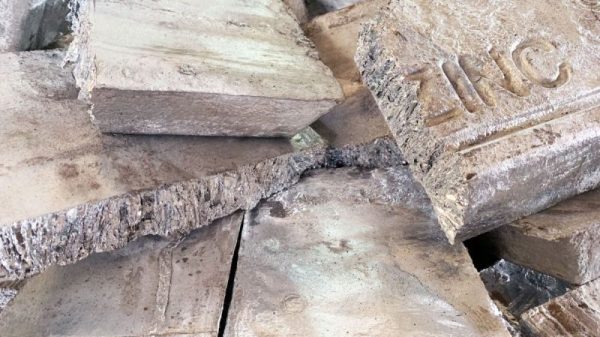Israel has launched what it called “a limited ground operation” across its northern border into Lebanon targeting the Iran-backed militant group Hezbollah, opening a new and dangerous phase in almost a year of war.
The incursion, which Israel’s National Security Cabinet has called the “next phase” of its war with Hezbollah, marks the fourth time that Israeli soldiers have publicly entered Lebanese soil in nearly 50 years, and the first since Israel’s 34-day war in the country in 2006.
Israeli troops laid the groundwork for the incursion in recent days, ramping up airstrikes that have killed hundreds of people, destroyed homes and displaced about 1 million people in Lebanon.
The latest escalation comes after Israel killed Hezbollah’s leader Hassan Nasrallah in an airstrike on Friday and decimated the leadership of the most powerful paramilitary force in the Middle East.
Here’s what we know.
Extent of incursion unclear
Israeli officials have characterized the incursion into southern Lebanon as limited in scope, saying there will be “no long-term occupation.”
The Israeli military said it was focused on removing “immediate threats” from Lebanese villages along the border, including Hezbollah’s ability to infiltrate northern Israel.
But officials have declined to say how deep Israeli troops would venture into the country or how long the operation is expected to last.
Israeli leaders have hinted that further action would come. On Monday, Israeli Defense Minister Yoav Gallant told troops near the Lebanese border that the assassination of Hezbollah leader Nasrallah was “a very important step, but it is not the final one,” and that “we will employ all the capabilities at our disposal.”
While the extent of Israel’s military plans inside Lebanon remain unclear, Prime Minister Benjamin Netanyahu has become increasingly defiant of international calls for restraint and de-escalation, as well as widespread outrage over growing civilian casualties in Lebanon and Gaza.
Previous military operations initially declared by Israel to be limited in their goals have proved to be anything but.
Examples include Israel’s years-long occupation of southern Lebanon that began in 1982 with the stated aim of a brief and limited mission to destroy the Palestinian Liberation Organization (PLO) in the country.
More recently, Israel’s military declared a “limited” operation in Rafah, southern Gaza that has left the city in ruins.
What happened ahead of the incursion?
Shortly before the incursion, Israel’s National Security Cabinet approved the “next phase” of its war with Hezbollah, according to Israeli media.
In preparation, the Israeli military launched small raids and artillery fire across the Lebanon border, and sealed off several communities in northern Israel, limiting the movement of civilians there.
The Lebanese army had also evacuated observation posts at the southern border and moved to barracks in the border villages, according to a Lebanese security source.
Meanwhile, Israel’s air force once again bombed the southern suburbs of the Lebanese capital Beirut, predominantly Shia neighborhoods where Hezbollah has a stronghold.
It follows Israeli airstrikes that hit inside Beirut’s city limits early Monday for the first time since the Palestinian militant group Hamas’ October 7 attacks on Israel.
Isn’t Israel fighting Hamas in Gaza? Why are Israeli troops now in Lebanon?
Israel and Lebanon-based Hezbollah have been engaged in a tit-for-tat escalation since the war in Gaza began following Hamas’ attack on Israel last October. Hezbollah has said it will not stop striking Israel until a ceasefire is reached in the Palestinian enclave, much of which has been reduced to rubble by Israeli bombs and fighting.
In recent weeks, Israel has refocused its military objectives north with a new war aim to return displaced residents to their homes along the Lebanon border. About 60,000 Israeli civilians have been forced from their homes by Hezbollah’s rocket attacks.
What’s unfolded is some of the fiercest fighting between the two longtime foes since the 2006 Lebanon war, which killed 1,100 in the country. Nearly 50 Israeli civilians and 121 Israeli soldiers were also killed.
Last month, pagers and walkie-talkies used by Hezbollah members exploded across Lebanon in a coordinated Israeli attack that killed dozens of people and maimed thousands, including women and children.
Israel has also stepped up a relentless bombing campaign across Lebanon targeting Hezbollah’s infrastructure and leadership, but the strikes have also decimated homes and neighborhoods in densely populated areas. Massive airstrikes in southern Beirut have killed a string of Hezbollah leaders, as well as more than 1,000 people.
The Iran question
The latest developments raise questions about how a weakened Hezbollah will respond, and the extent to which its backer Iran could get involved, once more ratcheting up fears of a wider regional war.
Hezbollah is part of an Iran-led alliance spanning Yemen, Syria, Gaza and Iraq that has attacked Israel and its allies since the war with Hamas began.
In a fiery speech on Sunday, Netanyahu said one of Israel’s goals is “changing the balance of power in the region” and that “there is no place in Iran or the Middle East that the long arm of Israel will not reach.”
Killing Hezbollah leader Nasrallah and wiping out the group’s capabilities to launch a large-scale attack on Israel were “necessary” conditions to achieve that goal, he said.
Israel has also ramped up attacks on multiple fronts against other Iran-backed militants, including launching strikes targeting the Houthis in Yemen.
But despite the recent Israeli strikes on its proxies, Iran has appeared wary of moving into direct conflict with its longtime enemy, even as their decades-long shadow war has been pushed further into the open. Many observers fear any direct Iranian retaliation could draw the United States further into the conflict.
How has the US reacted?
Attention has focused on how the once-mighty US is increasingly powerless to rein in its ally or to influence other major belligerents in a fast-worsening regional crisis.
The White House on Monday said Israel has the right to defend itself, but warned of the risk of “mission creep” in a ground operation that could ultimately broaden in scope and turn into a longer-term incursion.
President Joe Biden last week unveiled a 21-day ceasefire proposal, backed by other US allies, that was almost immediately rejected by Netanyahu – to the frustration of the White House.
The US is a key provider of Israel’s weapons — it likely supplied the 2,000-pound bombs used to kill Hezbollah’s leader — but Biden and his advisers have continued to call for a diplomatic resolution.

























